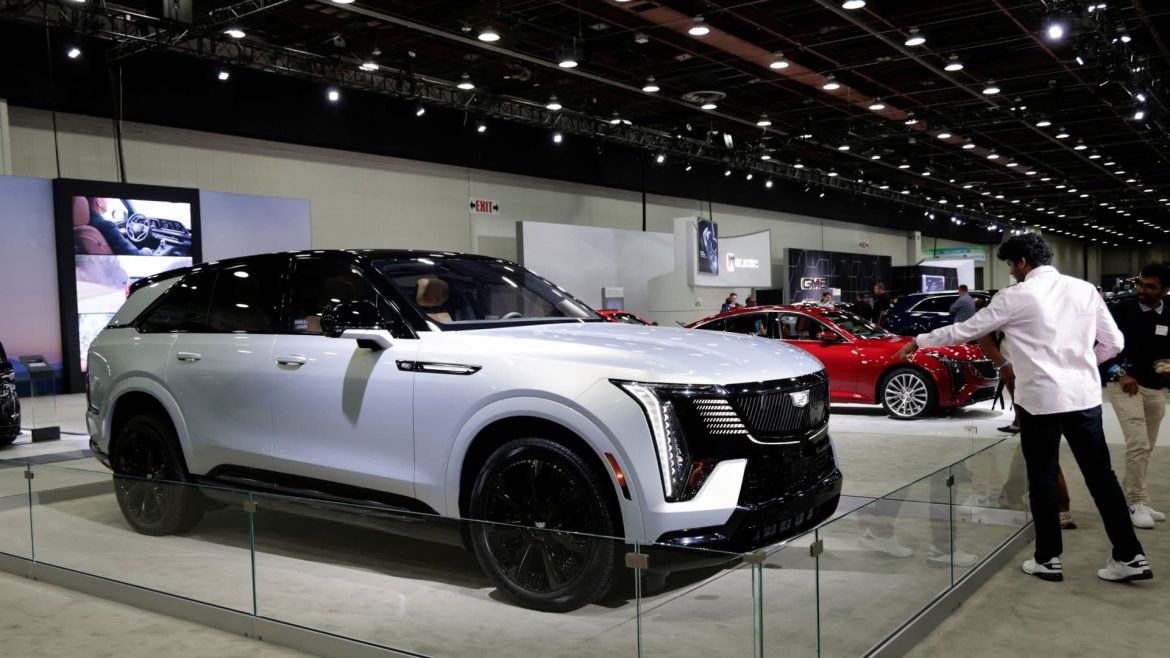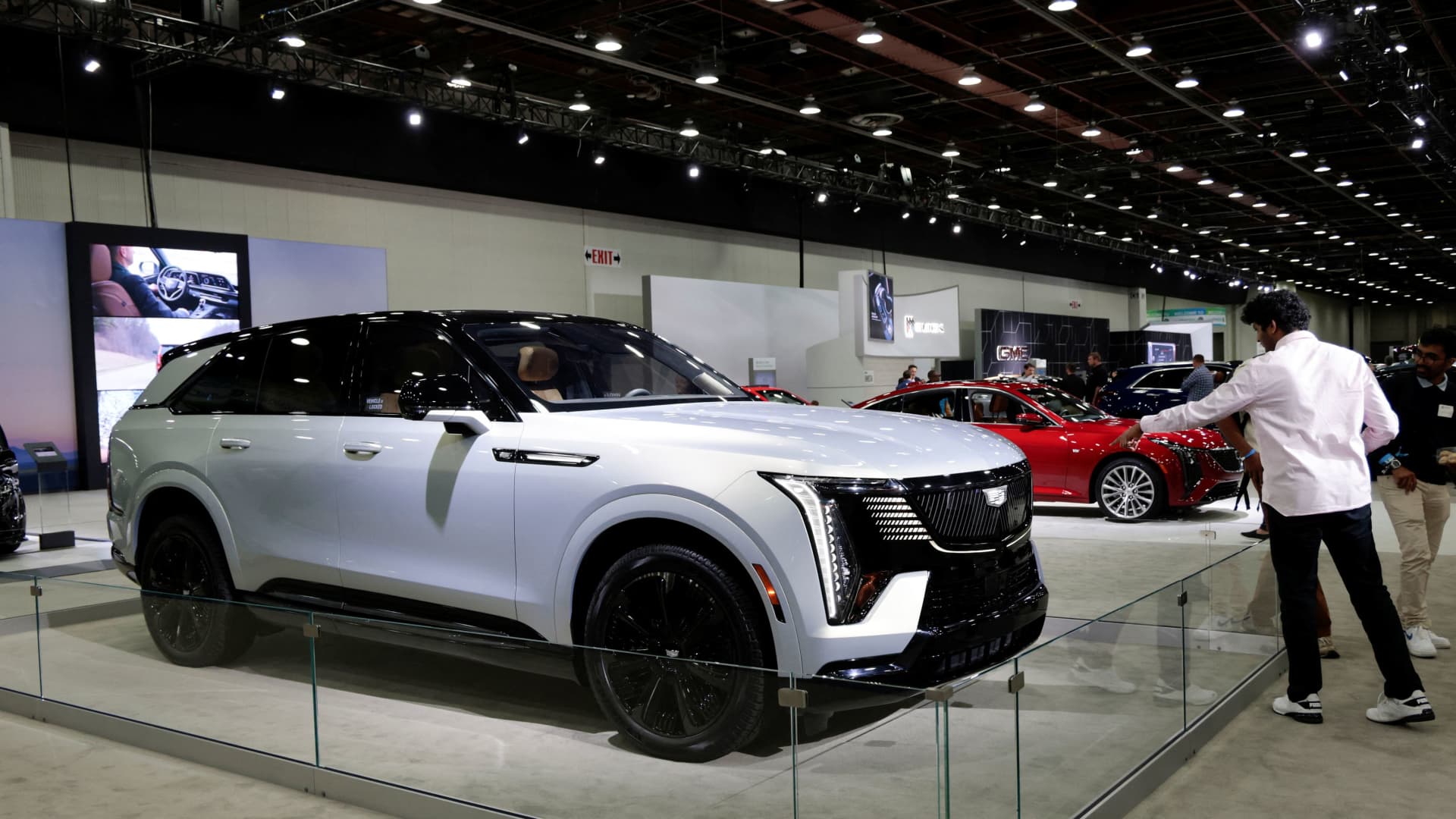The EV Market in 2025: Tesla’s Challenges and Cadillac’s Rising Momentum
—
Introduction: A Shifting Landscape in Electric Vehicles
As of 2025, the electric vehicle (EV) market in the United States and beyond has reached a pivotal moment. Tesla, once an undisputed leader and market pioneer, now faces growing headwinds as competitors, both legacy automakers and newer entrants, intensify their efforts to capture market share. While Tesla retains a loyal base, its ability to attract new buyers is challenged by rivals offering increasingly attractive options. Among these challengers, Cadillac stands out with significant growth in EV sales, a young-buyer appeal, and strategic moves designed to erode Tesla’s dominance in the luxury EV segment.
—
Tesla’s Market Dilemma: Losing Appeal Among ‘Normal’ Buyers
Tesla’s rise has long been synonymous with innovation and a loyal following, but recent developments suggest troubles in maintaining its once insurmountable position:
– Declining Sales and Market Share: Tesla’s share of the U.S. EV market has slid despite an overall surge in EV adoption. Data points to 2024 as a record year for U.S. EV sales (about 1.3 million units), yet Tesla’s growth did not keep pace with the overall market expansion.
– High Trade-In Rates: A growing number of Tesla owners are trading in their vehicles at record levels. According to Edmunds and CBS News reports, Tesla trade-ins have spiked amid brand perception issues linked to CEO Elon Musk, including political controversies. Strikingly, some Tesla owners are even switching back to internal combustion engine vehicles, a surprising trend that underscores brand challenges.
– Reputation and Buyer Preferences: Articles note that many new EV buyers seek alternatives “without the baggage associated with the Tesla badge.” The perception that Tesla serves a niche crowd narrows its appeal among “normal” or mainstream buyers who look for more balanced lifestyle appeal and varied brand identities.
This shift suggests Tesla’s challenge is not solely about product quality but also brand image and market segmentation—factors that rivals are exploiting.
—
Cadillac’s Bold EV Push: Capturing New Ground and New Buyers
Cadillac’s transformation from a struggling luxury brand to a formidable EV contender is one of the most notable narratives of 2025:
– Impressive EV Sales Growth: Cadillac expects EVs to constitute between 30-35% of its U.S. vehicle sales in 2025, a dramatic jump from 18% in 2024. GM’s Q2 2024 data shows that nearly 94% of its electric vehicle deliveries were Ultium-based, with Cadillac’s models central in this surge.
– Broad EV Lineup Expansion: The introduction of vehicles like the Cadillac Lyriq, Vistiq (a three-row crossover), and the highly touted Optiq compact SUV greatly expands Cadillac’s appeal. These models focus on luxury combined with accessibility — targeting younger and more budget-conscious buyers without sacrificing quality or tech sophistication.
– Attracting Younger, Affluent Buyers: Cadillac is finally making headway with younger demographics, a group it historically struggled to capture. Features like stylish designs, competitive pricing, advanced tech including Google integration (in vehicles like the 2025 Lyriq with a 33” LED curved display), and a range of size options resonate well in the crossover-heavy market segment.
– Trading Up from Tesla: There is clear evidence that Cadillac is persuading Tesla owners to switch brands. Around 70% of Lyriq buyers come from outside Cadillac, many trading in Teslas. Cadillac’s ability to capitalize on Tesla’s brand fatigue is a critical element of its growth strategy.
– Dealer Network Evolution: While Cadillac pruned away about 150 dealers unwilling to invest in EVs, the remaining network (approximately 590 dealers) is committed to selling electric. This dealer alignment enables a focused strategy on EV sales and customer education, fostering trust and reliability in the brand’s new direction.
—
Cadillac’s Market Position and Strategy Compared to Competitors
Cadillac’s step into the luxury EV space comes amid a competitive arena:
– Luxury EV Segment Leadership Potential: Cadillac aims to be the best-selling luxury EV brand in 2025, a bold claim supported by robust sales growth and product pipeline. Its new models hit a “sweet spot” for luxury pricing—offering high-end features at more accessible prices compared to some counterparts.
– Competition from General Motors and Other Legacy Automakers: GM’s broader EV vision includes releasing at least 30 EV models by 2025, with Cadillac as the flagship luxury brand. Vehicles like the Chevrolet Bolt and GMC Hummer EV occupy different niches, complementing Cadillac’s luxury offerings.
– Other Rivals: Ford, Lucid, Audi, Genesis, and even newcomers like Lucid are also targeting Tesla owners with differentiated product offerings. Lucid, for example, is winning over Tesla customers seeking alternatives. Ford’s F-150 Lightning and the Kia EV9 also have a significant share among former Tesla drivers trading in their vehicles.
– Balancing EV with ICE Market: Cadillac still maintains portfolio balance by supporting internal combustion engine (ICE) products alongside EVs to serve diverse buyer preferences, which could be an advantage as market dynamics fluctuate.
—
The Industry Context: EV Adoption and Customer Sentiment
Overall, enthusiasm for electric vehicles remains strong despite complex factors:
– Sustained Demand Despite Backlash: Electric vehicle adoption in the U.S. continues to accelerate, with consumers expressing sustained interest in EVs beyond Tesla’s influence. Even with potential regulatory uncertainties, tariffs, and incentives shifts, the consumer appetite for EVs is robust.
– Customer Education and Experience: Cadillac’s emphasis on “educating” customers about EV ownership and benefits plays a strategic role. This is essential to converting younger buyers who might be EV-curious but not yet committed.
– Market Expansion Beyond the U.S.: Cadillac’s EV presence is growing internationally, including new lineup launches in markets like Australia, New Zealand, Canada (with strong conquest sales), and the return to Europe with online sales in France. This global push further strengthens its competitive stance.
—
Conclusion: A Tectonic Shift in the EV Landscape
Tesla’s pioneering role in the electric vehicle market will remain influential, but the landscape in 2025 reflects a market no longer dominated by a single brand. Growing dissatisfaction among Tesla buyers, coupled with brand fatigue and shifting preferences, opens substantial opportunity for competitors.
Cadillac has seized this moment with strategic product launches, targeting previously hard-to-reach younger buyers, expanding its EV lineup, and positioning itself as a luxury brand that balances affordability with top-tier features. The brand’s ability to convert Tesla owners and expand its dealer network to support electric sales underscores its serious bid for leadership in the luxury EV segment.
The future EV market will likely be defined by diversified consumer tastes, more competitive choices, and evolving brand perceptions. Cadillac’s progress exemplifies this new era, turning from a legacy automaker with a mixed history into one of Tesla’s most formidable challengers. For Tesla, reevaluating its brand allure and broadening its buyer base will be critical to regaining momentum in an increasingly crowded marketplace.





